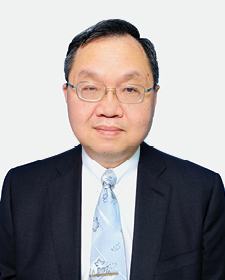Only three companies based in Hong Kong use captive insurance to protect their Belt and Road projects but with encouragement, others could follow their pioneering lead.

Insuring against risk is a key component of doing business globally. Companies unfamiliar with regional conditions, politics, regulations, languages, cultures and legislatures are most at danger of putting their operations at risk of financial loss when they lack the requisite knowledge.
This applies, of course, to Belt and Road projects. The complexity surrounding these projects not only involves construction and infrastructure investment worth billions of dollars, it also involves a network of businesses, governments, authorities, financing, subcontractors and supply chains all wanting to protect their own investments and shareholders.
Comprehensive insurance against loss or legal repercussions is one way of reducing corporate liabilities within these projects and jurisdictions. This transaction is normally carried out using commercial insurers and reinsurers, a delegation that’s particularly necessary with potentially large claims.
In Hong Kong, the Sinopec Group, a global petroleum, petrochemical and energy conglomerate and one of the world’s top chemical producers, has taken a different approach. It is one of the three Hong Kong-based Chinese state-owned enterprises (SOEs) using captive insurance to cover their own groups’ risks.
How captive insurance works
Working outside the commercial insurance market gives captive insurers the flexibility to negotiate directly with reinsurers. Sinopec Insurance’s Chief Risk Officer Andrew Chow sees captive insurance as a sophisticated form of self-insurance. “A captive insurance company is owned by the parent company and can only write risk for the parent group.” Since a captive insurer focuses on protecting only its own corporation, it’s also able to gather deep local knowledge about both risks and the environment likely to impact on returns.

From a risk perspective, Chow says it makes sense to set up a captive insurer entity if your corporation believes it can price risk better than a general insurer. Insuring through a commercial insurance company means paying a premium that takes into account losses and claims by the general insuring public.
Directly tapping reinsurers reduces costs by being able to access more competitive rates. It can also be tailored to cover risks which are not easily insurable, such as cyber security or terrorism, and to reduce costs since a single entity’s loss experience is usually better than the market average. A company using captive insurance is also not paying any intermediary payments.
Internationally, captive domicile centres such as Bermuda and Luxemburg offer encouraging tax breaks. In Asia, Malaysia and Singapore also offer attractive tax incentives to enterprises setting up captive insurance in their jurisdictions.
According to Chow, Hong Kong is also a good location to set up captive insurance. Factors in its favour include a free market economy and currency exchange, an internationally-recognised legal system, mature markets and global connectivity with reinsurers, lawyers and loss adjusters. The only downside, he says, is Hong Kong would need to develop greater expertise in managing captive insurance. Since this expertise is readily available internationally, Chow feels these skills could be sourced as required.
Reducing loss through knowledge
Assessing risk in Belt and Road jurisdictions is extraordinarily complex, spanning everything from legal and contract risk, to environmental and political uncertainty.
“Risk identification is not easy. It’s a mixture of art and science,” says Chow. “Without a full understanding, you will never fully identify risk, and only by correctly identifying risk can you then manage it.”
Taking the lead
With its unique position as the commercial hub for Belt and Road projects and deep pool of professional services, Hong Kong is ideally-placed to help mainland enterprises create their own captive insurers, a move Chow says would also benefit Hong Kong’s insurance industry.
Sinopec’s extensive global investments means the conglomerate’s expertise in recognising and assessing risks to Belt and Road projects is unprecedented, and that many of its projects are aligned directly with the Belt and Road Initiative, particularly since a number of countries within its reach have rich oil, gas and energy resources. For instance, its oil and gas exploration and development projects include 11 countries and span 18 projects along the Belt and Road, encompassing Russia, Kazakhstan, Saudi Arabia, Indonesia and Myanmar, while refinery investments include India, Malaysia and Thailand.
As Chow mentioned during panel discussions at the 2018 Belt and Road Summit, by setting up a captive insurer operation in Hong Kong, SOEs and large organisations could pool and share their knowledge about risks arising from projects between subsidiaries and associates. This could reduce the overall cost of insurance, reduce avoidable losses and increase overall risk management capabilities.
Another option would be for Hong Kong to host a centralised data source or pool of information about Belt and Road risk, where captive insurers could share their local knowledge and expertise.
Currently all three captive insurers in Hong Kong, the Sinopec Group, China General Nuclear Power Group (CGN) and China National Offshore Oil Corporation (CNOOC) individually hold risk assessment data for their own purposes but do not share their collective knowledge.
In Sinopec’s case, the group’s global knowledge base is gathered from 25 countries in which it operates. Having a centralised database in Hong Kong where information is shared globally would, Chow believes, benefit corporates seeking to explore potential Belt and Road projects from outside the region, as well as those in Asia looking to expand their operations.


